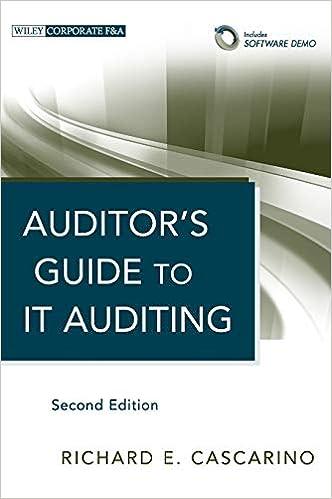Question
Operations started in February 2001 out of a leased warehouse near Eleanor Dale's home, but it was soon obvious that much more space was needed.
Operations started in February 2001 out of a leased warehouse near Eleanor Dale's home, but it was soon obvious that much more space was needed. Holographic art may in the past have been considered to be a passing fad that struck people's fancy, as charged by Dale's detractors, but during the remainder of 2001 sales totaled $12.6 million, with a profit after tax of $798,000 (see Table 1). Furthermore, Dale's faith in the continuing viability of the concept proved to be well founded, as sales grew rapidly until 2007, when they were $39.23 million with profits of $3,588,000 (see Table 2). The price of the company's stock, which was traded over-the counter from 2001 through 2003, is currently listed at $10.60 per share, and it earned $0.36 per share in 2007. After researching the various possibilities, Douglas Dahigren, the financial vice-president, has decided that there are three viable alternatives available to the company as follows: common stock can be sold to net Visual Imagery $9.60 per share after underwriting costs of $1.00 per share, The company can sell preferred stock with a par value of $100 that would pay an $11 annual dividend. Preferred stock would be sold to the public at par and would incur brokerage costs of $4 per share, Visual Imagery can sell $10 million of notes to the Maryland Security Life Insurance Company. The notes would be fully amortized over the next 20 years and would bear an interest rate of 11 percent. Key provisions of this loan agreement require that the company maintain a current ratio of 2.5 to 1.0, pay cash dividends only out of cash generated after the loan agreement is signed and engage in no additional long-term debt financing without the agreement of the Maryland Security Life Insurance Company. The notes would be callable, but only at a 17 percent call premium on the unamortized balance. Table 1 Selected Information (Thousands of Dollars) Year Sales Profit EPS Stock After Tax Price 2007 $39,230 $3,588 $0.36 $10.60 2006 35,860 3,064 0.31 7.13 2005 33,210 2,558 0.26 5.20 2004 27,930 2,109 0.21 4.41 2003 21,750 1,398 0.14 3.05 2002 15,507 989 0.10 1.80 2001 12,600 798 0.08 1.50 Table 2 Year Ended December 31, 2007 (Thousands of Dollars) Sales $39,230 Cost of goods solda 28,970 Gross Profit $10,260 General and administrative expenses 2,480 Earnings before interest $ 7,780 Interest charges 1,800 Earnings before taxes $ 5,980 Taxes (40 percent effective rate) 2,392 Net income $ 3,588 Dividends $ 897 Addition to retained earnings $ 2,691 Note: a Includes depreciation of $3.96 million Table 3 Year Ended December 31, 2007 (Thousands of Dollars) Current assets $19,000 Fixed assets 33,000 Total assets $52,000 Current liabilities (accruals and accounts payable) $ 9,000 Long-term debt (9 percent) 20,000 Common stock ($1.80 par) 18,000 Retained earnings 5,000 Total liabilities and net worth $52,000 Table 4 Industry Ratios Debt/total assets 50% Times-interest-earned 8 X Times fixed charges covered 6 X Profit after taxes/sales 9% Profit after tax/total assets 9% Profit after tax/net worth 14% Price/earnings 40X Question: Assuming that the new funds earn the same rate of return before interest and taxes as is currently earned on the firm's assets (earnings before interest and taxes/total assets), what would earnings per share be under each alternative? Assume that the new outside funds are employed during the whole year 2008, but that 2008 additions to retained earnings are not employed until 2009. Interpret your measures of earnings per share of three alternatives.
Step by Step Solution
There are 3 Steps involved in it
Step: 1

Get Instant Access to Expert-Tailored Solutions
See step-by-step solutions with expert insights and AI powered tools for academic success
Step: 2

Step: 3

Ace Your Homework with AI
Get the answers you need in no time with our AI-driven, step-by-step assistance
Get Started


